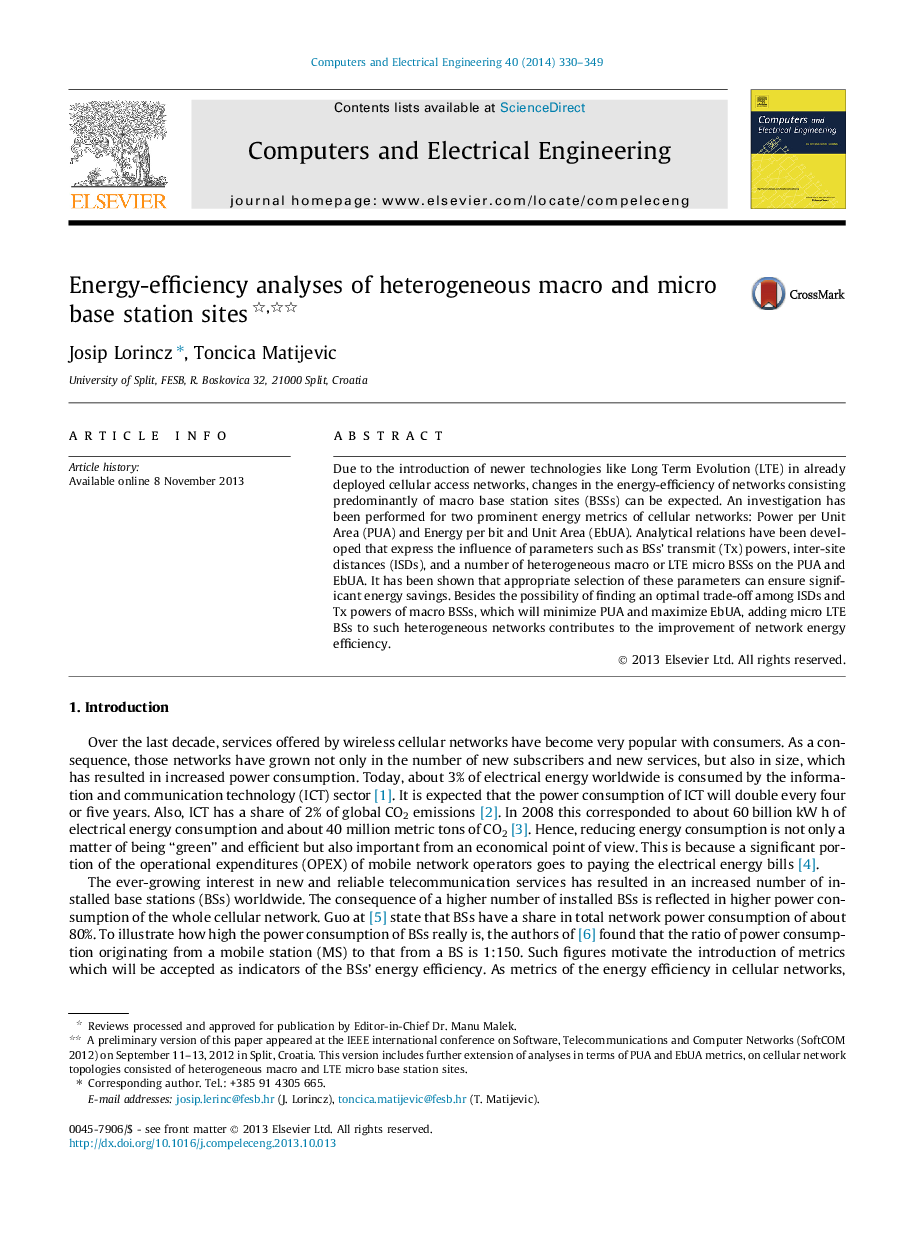| Article ID | Journal | Published Year | Pages | File Type |
|---|---|---|---|---|
| 10341086 | Computers & Electrical Engineering | 2014 | 20 Pages |
Abstract
Due to the introduction of newer technologies like Long Term Evolution (LTE) in already deployed cellular access networks, changes in the energy-efficiency of networks consisting predominantly of macro base station sites (BSSs) can be expected. An investigation has been performed for two prominent energy metrics of cellular networks: Power per Unit Area (PUA) and Energy per bit and Unit Area (EbUA). Analytical relations have been developed that express the influence of parameters such as BSs' transmit (Tx) powers, inter-site distances (ISDs), and a number of heterogeneous macro or LTE micro BSSs on the PUA and EbUA. It has been shown that appropriate selection of these parameters can ensure significant energy savings. Besides the possibility of finding an optimal trade-off among ISDs and Tx powers of macro BSSs, which will minimize PUA and maximize EbUA, adding micro LTE BSs to such heterogeneous networks contributes to the improvement of network energy efficiency.
Related Topics
Physical Sciences and Engineering
Computer Science
Computer Networks and Communications
Authors
Josip Lorincz, Toncica Matijevic,
